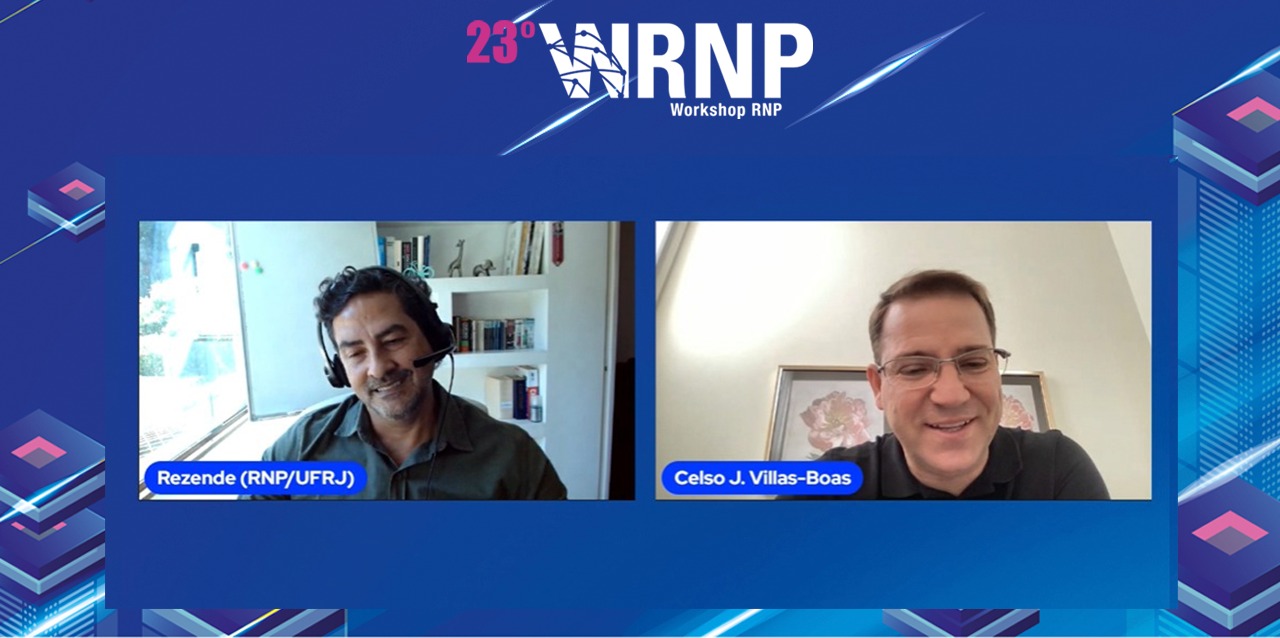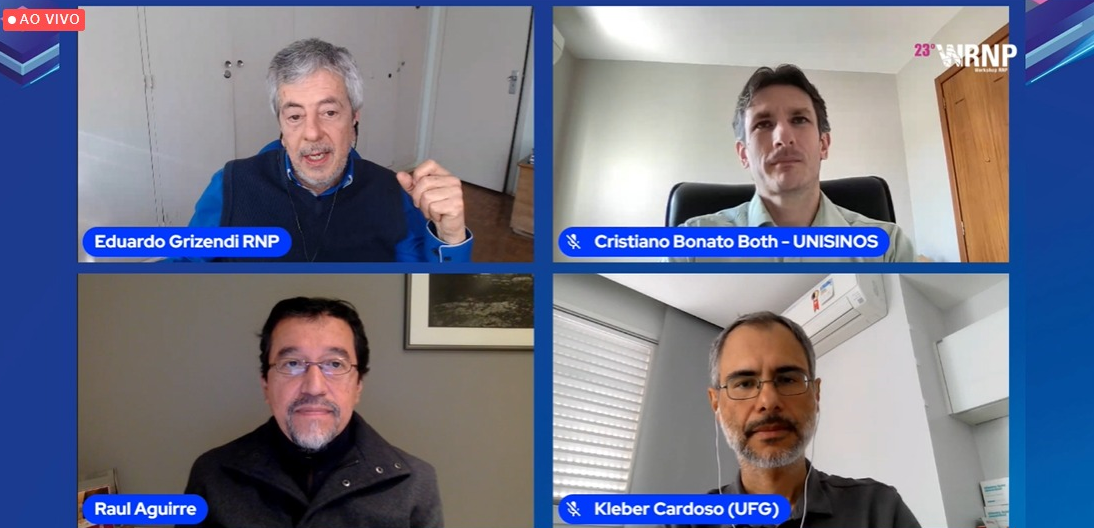Applications in quantum theory have strong economic impact, says Celso Villas-Bôas (UFSCar)
With the potential to revolutionize science and the way we live in ways that are difficult to predict, quantum computing is one of the hottest and most promising topics today. In the lecture “The transformation of quantum information into market value”, on the second day of the 23rd WRNP, the professor of the Physics Department of the Federal University of São Carlos (UFSCar) Celso Jorge Villas-Bôas brought a historical overview of the development of the area and highlighted the Brazilian contributions in the scenario. The mediation was by José Ferreira de Rezende, academic and scientific advisor at RNP.
In his presentation, the UFSCar professor highlighted the economic potential of investing in research in the area. “Today it is estimated that roughly 1/3 of US GDP is directly linked to quantum theory. It had a violent impact not only on human knowledge, on the way we see things, but a very strong economic impact", he commented.
With roots in Germany at the end of the 19th century, quantum physics brought a new understanding of the constitution of atoms and matter, and is behind several everyday technologies, such as the laser beam in medicine and electronic devices, cell phone chips, telephones and computers. The invention of the commercial light bulb, by Thomas Edison (1847-1931) and the need to optimize the manufacture of cannons in Germany were fundamental for the country's government to invest in basic science projects at the time.
“Behind these two problems was the problem of blackbody radiation, much studied by Max Planck (1858-1947). Seeing the technical need in Berlin, with the aim of modernizing the cities. This institute was concerned with basic science. Planck studied this type of problem without concern for its applications”, said the speaker, for whom we can learn from this story.
With the discoveries of the physicist Richard Feynman (1918-1988) and the mathematician Peter Shor, at the end of the 20th century, quantum computing attracted the attention of scientists and companies all over the world, because of the possibilities of application. “The most crucial aspect of all these technologies lies in the phenomenon of superposition. When we talk about information processing, in the classical world, we either have bit 0 or bit 1. And in the quantum world, you can have the 0 and the 1 happening at the same time, carrying that information in parallel. Many researchers began to use this property to produce new, more disruptive technologies”, explained Villas-Bôas.
Large companies in the sector – such as Google, IBM, Amazon and Microsoft – direct millionaire investments to the development of quantum computers, which promise to process data in record time. A 76-qubit photonic computer developed in China was able to perform, in 200 seconds, a task that the country's largest supercomputer would take 600 million years.
“Google created a campus just to study this subject. Their prediction is to have 1 million qubits by the end of the decade, because with that they believe it will be possible to solve practical problems with extraordinary advantages. IBM invests very heavily, and has just delivered a chip with 127 qubits”, said the speaker.
Brazil is already carrying out research in the area at centers such as the Physics Institute of the Federal University of Rio de Janeiro (UFRJ), the Sisdia Quantum Technologies Group, of the Brazilian Army; the QuIntec Group, from Unicamp; and the MCTI SofTex Network of Quantum Computational Technologies.
Ntropic, group from the Wernher Von Braun Center for Advanced Research, which Villas-Bôas is a member of, has a team of scientists, engineers and business professionals to generate applications in quantum mechanics from technologies that are being studied around the world. “We work with applications in quantum computing, such as solutions to vehicle routing problems and the allocation of objects in warehouses. We also work in communication, to test secure communication systems in optical fibers, and in sensors”, he said.
New generations of mobile networks in academic networks and high-performance data movement
“Does it make sense for RNP to have a mobile and 5G network operation?”
With this question in mind, RNP's director of engineering and operations, Eduardo Grizendi, opened the session “Opportunities for new generations of mobile networks in academic networks”, which he moderated. The panel was attended by Kleber Cardoso, professor at the Institute of Informatics at the Federal University of Goiânia (UFG); Cristiano Both, professor at the University of Vale do Rio dos Sinos (UNISINOS); and Raul Aguirre, from Wayra Consultoria.
To help answer the question, Grizendi recalled RNP's strategic objective of “providing a secure, high-performance and available cyberinfrastructure, and at the same time ubiquitous, omnipresent, anywhere and anytime”. Cardoso highlighted that, in his opinion, the institution should invest in these technologies. “When we look at the term 'anywhere', written in RNP's mission, we agree that fiber optics, wifi and other technologies traditionally used by RNP are not enough. Eventually it is necessary to assist users who do not have access to the Internet, and the mobile network appears as a necessity in this context”, he explained.
The session “High Performance Data Movement Environment for ICTs” presented the RNP project with Petrobras, which aims to facilitate the exchange of data between researchers from CENPES and the LNCC (National Laboratory for Scientific Computing) and build a high-performance and secure data movement environment.
Deputy Director for e-Science and advanced cyberinfrastructure at RNP's Research, Development & Innovation (DPDI) directorate, Leandro Ciuffo, moderated the panel with the participation of Fabio Souza (CENPES); Luis Rodrigo (LNCC); and Jefferson Souza (RNP). Ciuffo gave a brief presentation about the project and led the conversation that addressed the challenges and bottlenecks in moving data.

